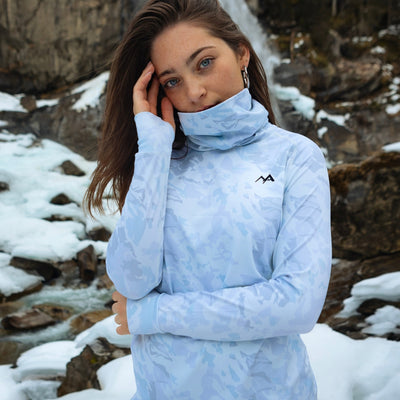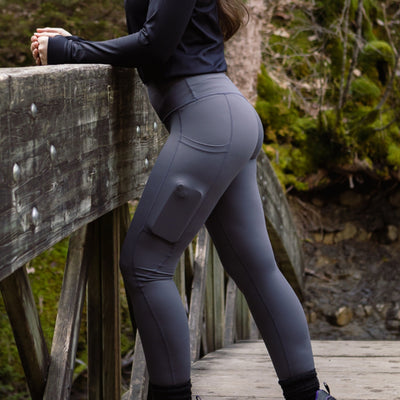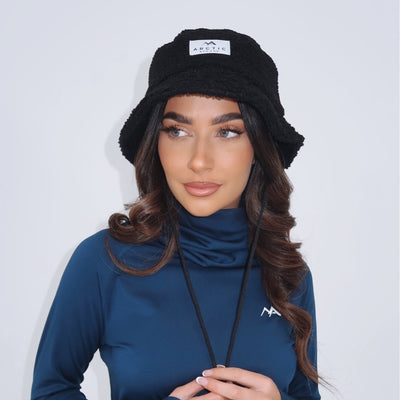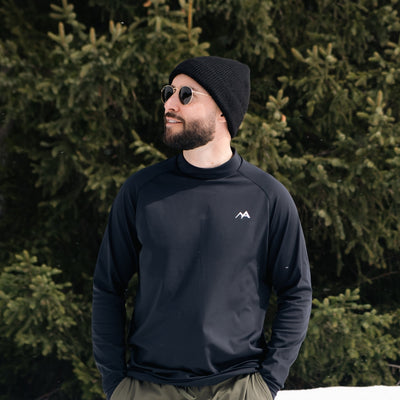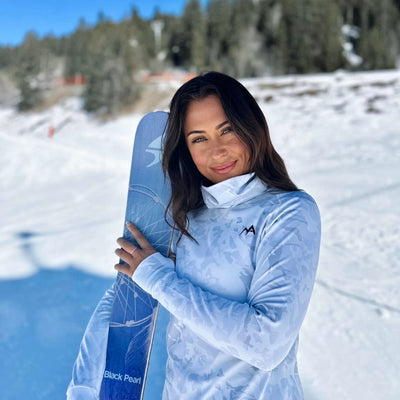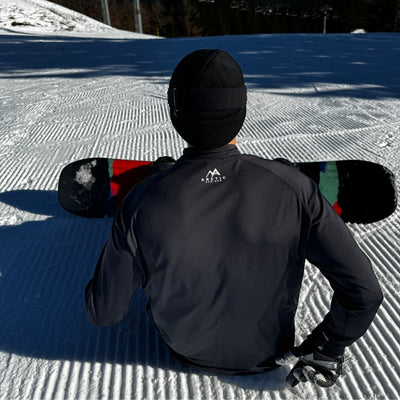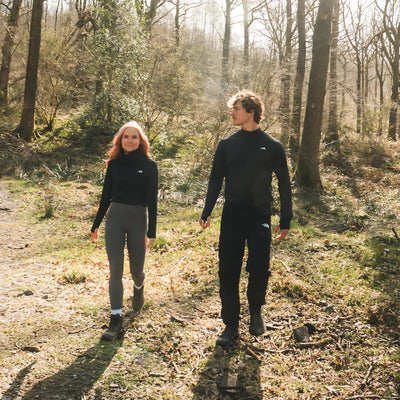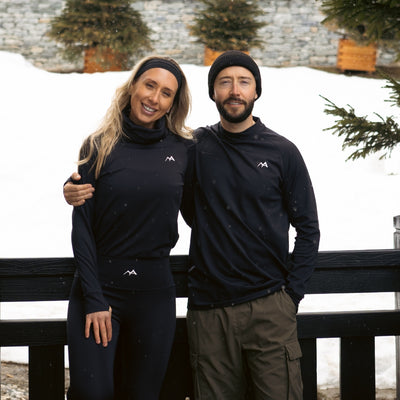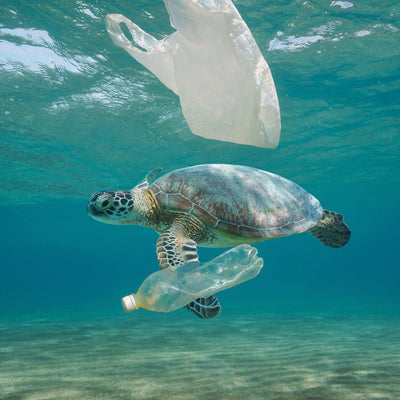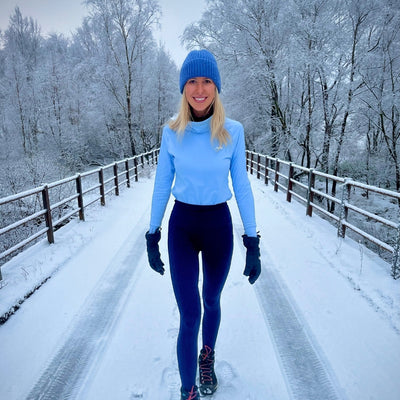Planning a snow trip this winter season - but not too sure what to bring?
Packing for a Ski or Snowboarding holiday can seem daunting, but we’re here to help! There’s nothing worse than leaving your holiday packing to the last minute and drowning in a never ending to-do list.
Take your time and use our useful guide for snow sports essentials to help make sure you have everything you need in your bag.
Technical Snow & Ski Gear
First-time snow skiers and snowboarders will quickly learn how fast, and dramatic the weather conditions change on the mountain - and that’s why it is so important to pack correctly.
You’ll easily experience a snippet of all four-seasons in the mountains within the one day - and as scary as that sounds, you can prepare yourself by investing in high-quality ski and snow gear.
The Layering System
Base Layers
A base layer is the layer closest to your skin and acts as a “second skin” throughout your ski adventures. A high-performing base layer is designed to retain or release your body warmth for ultimate temperature regulation, actively managed moisture and repel sweat away from your skin whilst providing unbeatable comfort for wear all day long.
But what does this all mean?
You’ll experience those “blue-bird” days when the suns beaming, the skies are blue, the reflection of the snow is blinding, and it appears that everyone is heading to the mountain bars for Apres Ski! These warmer days will make you sweat - so you’ll need a base layer designed with a fabric that adjusts with your body temperature, wicks sweat away from the skin, and doesn’t leave you with an odour offensive to the nostrils.
On those much colder days, your base layers will be your best friend. A high-performing base layer will not only retain your body heat - it’ll encourage blood circulation for extra warmth, it’ll move with you as you carve fresh ski tracks across the mountain, as well as providing ultimate comfort underneath your outer layers with no added friction or tension. We’re talking that buttery soft, feels like you’re wearing your favourite PJ’s comfort.
But does such a base layer exist? Yes! Plus, we’ve designed our Arctic Eco-Sno Motion Base Layer collection with 78% recycled fabrics - each Arctic Eco-Sno Motion Base Layer set is crafted from 24 recycled plastic bottles!
You’ll then need to consider your mid layers and outer layers which will depend on the type of skier or snowboarder you are, as well as the month that you’ll be on the mountain. Think warmth, comfort, breathability, insultation, and style - these are some of the criteria to look for when browsing through winter gear.
A mid layer is worn to maintain your body heat. It’s worn on top of your base layers, and underneath your ski/snow jacket. A mid layer can be anything from a fleece to a light weight insulated jacket. Your ski/snow jacket is often already insulated with a fleece lining or a synthetic or down filing so you can adopt your mid layer accordingly.
The outer layer is your ski/snow jacket and it is essential that you choose a jacket that offers these features:
1. Insulation:
Most ski/snow jackets will be insulated - but the level of insulation will vary. The insulating ability of your ski/snow jacket depends on the quality and density of the fibres used which is measured in grams/metre2 as shown below:
80 grams/metre2 - Lightweight jacket
100 grams/metre2 - Typical/ multi-purpose jacket
120 grams/metre2 - Very warm jacket
2. Water resistant:
A ski/snow jacket treated with a water-resistant coating will provide greater durability in those colder and wetter mountain conditions. The rain will roll off your ski/snow jacket as opposed to being absorbed keeping you warm and dry.
3. Waterproof:
This feature gets a bit technical - but it is nonetheless the most important.
For an item to be classed as waterproof it must have a “hydrostatic head” rating of at least 1500mm. The higher the hydrostatic head, the more waterproof the fabric as shown in the below table.
So, how is it tested?
For a fabric to pass the hydrostatic head test it is pulled tight and held under a sealed tube of water. The fabric is observed over a period to ascertain how many millimetres of water can the fabric withstand before it seeps through.
Let’s go back a step - For the fabric to pass this test it must be treated with a “durable water repellence coating” (DWR), as well as a waterproof membrane applied to the inner surface of the fabric. A waterproof membrane is an additional layer bonded to the outer fabric that prevents water from going through. Gore-Tex, Polartec, Neoshell are some examples of waterproof membranes.
1. Hydrostatic Head (mm): 0 - 5,000 mm
Water Resistance: No resistance to some resistance to moisture.
Usable Conditions: Light rain, dry snow, no pressure.
2. Hydrostatic Head (mm): 6,000 - 10,000 mm
Water Resistance: Rainproof and waterproof under light pressure.
Usable Conditions: Light rain, average snow, light pressure.
3. Hydrostatic Head (mm): 11,000 - 15,000 mm
Water Resistance: Rainproof and waterproof except under high pressure.
Usable Conditions: Moderate rain, average snow, light pressure.
4. Hydrostatic Head (mm): 16,000 - 20,000 mm
Water Resistance: Rainproof and waterproof under high pressure.
Usable conditions: Heavy rain, wet snow, some pressure.
5. Hydrostatic Head (mm): 20,000 mm +
Water Resistance: Rainproof and waterproof under very high pressure.
Usable conditions: Heavy rain, wet snow, high pressure.
4. Breathability:
The breathability of your ski/snow jacket will affect how comfortable you’ll be when skiing or snowboarding.
It may seem strange to think that you’ll sweat when snow skiing or snowboarding in such cold conditions, but any physical activity will encourage perspiration or sweat. Wearing breathable snow gear will allow the miniscule molecules of perspiration to escape from inside, stops water like snow from entering your jacket, and eliminates that unbearable and uncomfortable hot and clammy feeling.
1. Adjustable Hood:
Most ski/snow jackets are designed with an adjustable hood which is ideal on those heavy snow-fall days when you need to pull this over your ski helmet.
2. Multiple Pockets:
Storage is everything and if you’re not one to ski or snowboard with a backpack - the next best thing is a ski/snow jacket with many pockets.
3. Fixed Snow Skirt:
The snow skirt is the material panel fitted within your ski/snow jacket that fits around your waist and hips to prevent snow from getting underneath your jacket.
4. Wrist Gaiters:
Like the fixed snow skirt, your ski/snow jacket wrist gaiters are designed to prevent snow from getting into your jacket sleeves, as well as comfortably fitting under your ski gloves.
5. Underarm Venting:
Look for some zippers underneath your armpits. This mesh lined venting allows for adjustable temperature control and breathability.
6. Audio Pocket:
This internal pocket is designed for your phone or music device to protect it from the wet and cold conditions.
7. Ski/Snow Google Pocket:
A helpful feature built into some jackets is a pocket for your snow googles. Ski googles can be easily scratched and we recommend investing in a ski google protector cover, or a jacket with this design feature.
When choosing ski/snow pants it’s important to find a design that meets the requirements of the kind of skiing you’ll experience. Even though most snow skiers and snowboarders experience less sensitivity to the cold on their legs, you’ll still need to consider water resistance and water proofing, breathability, ventilation, and of course comfort.
For the ultimate warmth and comfort, wear a pair of technical base layers under your ski/snow pants such as the Arctic Eco-Sno Motion Base Layers.
Designed with a brushed inner and smooth outer feel so they feel great under your outer layers, flat locks seems to avoid chaffing, and a ¾ finish to remove any friction between your base layer and ski boot or snowboard boot, you’ll never want to adventure without these. Plus, each Arctic Eco-Sno Motion Base Layer set is crafted with 24 recycled plastic bottles!
Water Resistance, Waterproofing and Breathability
Just like choosing a ski/snow jacket, the water resistance, waterproofing and breathability of the fabric membrane will differ across ski/snow pants so be sure to read the hang tags carefully. It’s essential to choose a ski/snow pant that provides protection, breathability and insultation against the harsh and cold elements.
It’s also recommended to check for side vents which allow for additional ventilation. Most ski/snow pants will have a side vent with a mesh feature inside the opening for added comfort.
Ski/Snow Pant Gaiters and Cuffs
It’s a great idea to choose a ski/snow pant with snow gaiters that pull over your ski or snowboard boots for additional protection. The bottoms of ski/snow pants are usually slightly flared with a zipper or snap adjustment, so we recommend checking your ski/snow pants to make sure they fit over your ski boots.
You’ll also normally received reinforced cuffs which are also great for protecting your ski/snow pants from damage caused by ski or snowboard edges.
